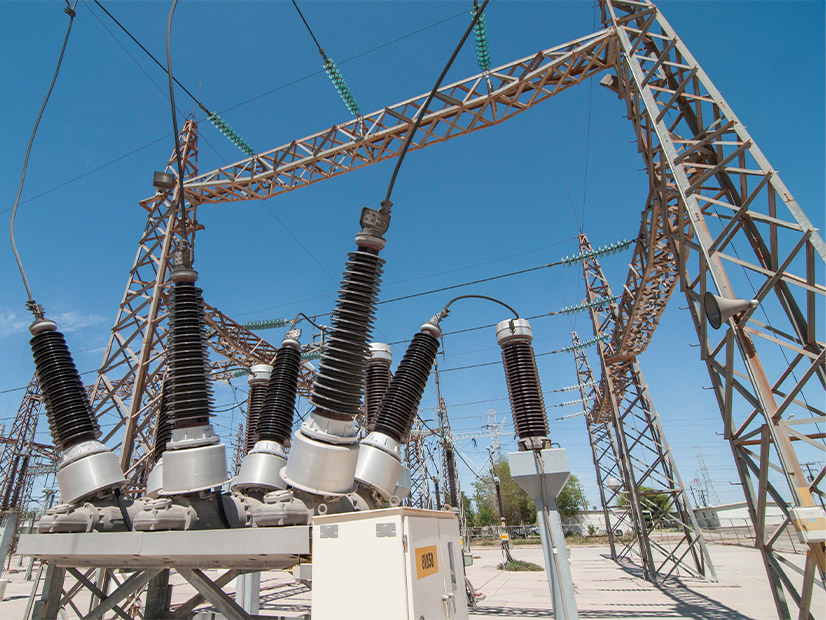
New York is moving to limit the use of sulfur hexafluoride in electrical power and distribution equipment and to reduce leakage of the most potent greenhouse gas.
New York is moving to limit use of sulfur hexafluoride (SF6) in electrical power and distribution equipment and to reduce leakage of the most potent greenhouse gas.
The draft regulations produced by the state Department of Conservation include a phaseout of new SF6 installations, limits on emissions and multiple reporting requirements.
The Dec. 28 announcement included a similar set of draft regulations on hydrofluorocarbons, commonly used in refrigeration and cooling equipment. HFCs also are potent greenhouse gases though less so than SF6, which is used primarily to insulate electrical equipment.
The draft regulations are part of New York’s continuing effort to reduce greenhouse gas emissions. The Climate Leadership and Community Protection Act of 2019 mandates the state drop to 60% of 1990 levels by 2030 and 15% by 2050.
New York’s most recent GHG emissions report calculates total emissions statewide at 368 million metric tons of carbon dioxide equivalent in 2021. The great bulk of that was carbon dioxide (211 mmt) and methane (131 mmt). HFCs were a distant third, at 22 mmt.
Total emissions of SF6 were reported at just 0.15 mmt, but the impact is much greater than the number suggests.
SF6 has the highest global warming potential among the seven greenhouse gases subject to CLCPA regulations — as much as 25,000 times greater than carbon dioxide, depending on the timeframe used for calculations. It is an extremely stable chemical, persisting in the atmosphere for millennia once released.
Proposed Rules
The draft regulations would apply to anyone who owns, installs or uses gas-insulated equipment (GIE) that uses SF6 or substitutes as an insulating medium.
The phaseout gradually would bar acquisition of SF6 GIE for use in New York state, with a few exceptions for reasons such as compatibility or availability of non-SF6 alternatives.
It would take effect on Jan. 1 of various years, depending on the size of the equipment:
-
- 2026 for above-ground GIE with voltage capacity less than 38 kV; below-ground GIE with less than 38-kV capacity and a short-circuit current rating of less than 25 kA; or any GIE rated 38 to 145 kV and less than 63 kA;
- 2027 for any GIE rated 145 to 245 kV and less than 63 kA;
- 2028 for above-ground GIE rated at 38 kV; or any GIE rated 38 to 145 kV and greater than 63 kA;
- 2031 for below-ground GIE rated lower than 38 kV and greater than 25 kA; or any GIE rated 145 to 245 kV and greater than 63 kA;
- 2033 for any GIE rated higher than 245 kV.
Replacement parts would not be subject to the phaseout.
The draft regulations also include:
-
- Formulas to calculate emissions limits that would take effect Jan. 1, 2028.
- A requirement to establish and maintain a detailed inventory of GIE devices and insulating gases, effective Jan. 1, 2025.
- Mandatory emissions reporting starting in 2026 for any GIE owner with annual emissions exceeding 7,500 metric tons of CO2 equivalent.
- A requirement to maintain five years of records and provide them to the state within 30 days of request.
Problem Recognized
The New York emissions report indicates that SF6 emissions have been declining in the state thanks to technological and economic changes — older equipment may contain greater quantities of the gas and be more prone to leaks.
However, the National Ocean and Atmospheric Administration’s Global Monitoring Laboratory has shown atmospheric concentrations steadily increasing over the past two decades.
The Environmental Protection Agency has been working to reduce emissions of SF6 in partnership with the U.S. electric power industry, which has been using the synthetic chemical in circuit breakers, gas-insulated substations and other switchgear since the 1950s.
California and Massachusetts have placed restrictions and requirements on use of SF6, and the Regional Greenhouse Gas Initiative is encouraging incremental actions toward early retirement and replacement of equipment containing SF6.
Prominent corporate members of the power industry have formed the SF6 & Alternatives Coalition to develop best practices and increase awareness of substitute gases with lower climate impacts than SF6.
In announcing the draft regulations, DEC Commissioner Basil Seggos said: “HFCs, SF6 and other greenhouse gases are accelerating the costly economic, public health and environmental impacts of climate change in New York state and across the globe. The draft regulations filed today help bring New York closer to realizing the Climate Act’s ambitious emission reduction requirements.”
The draft regulations will be published in the state register Jan. 10, opening a public comment period and setting the stage for a public hearing March 14.

